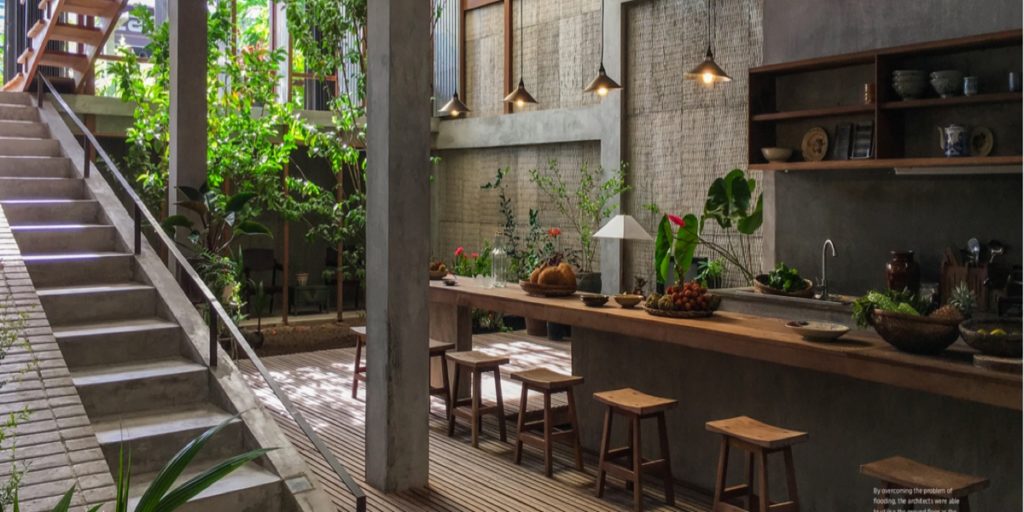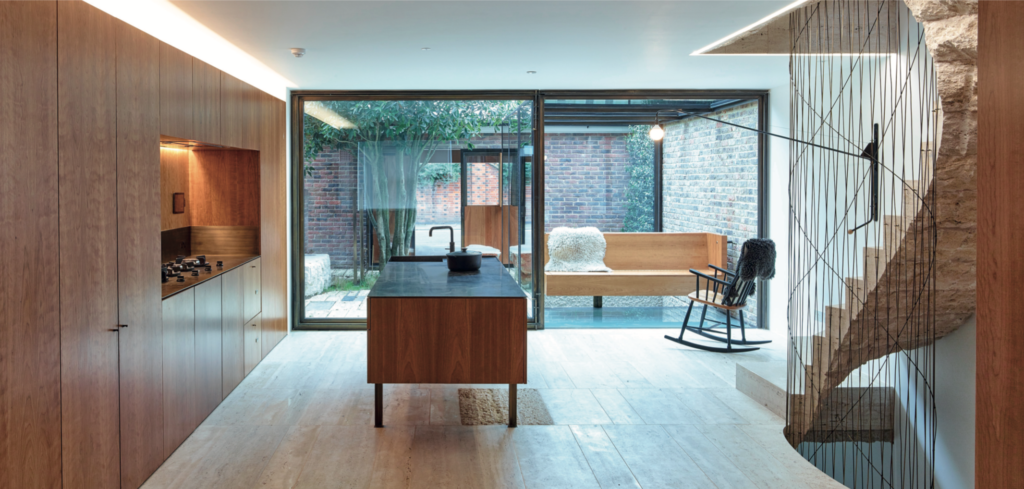“Material is endless. Take a stone: you can saw it, grind it, drill into it, split it, or polish it. It will become a different thing each time.” So says Swiss architect, Peter Zumthor. There’s no question that different materials have a different effect on us.
Walk into any room made from our original building materials – stone, timber or brick (mud) – and one feels a connection and a very specific sense of belonging unlike anything that our modern wall linings offer. Architects these days talk of the authenticity of a building and its materials.
“Materials complement the form, engage users, and add depth and richness to architecture. Rather than defining particular materials as “modern” and painting them across a boxy structure, “modern” is achieved when materials become inherent, rather than applied, to the overall design.” Francesco Di Sarra
Once upon a time buildings were decorated with cornices and curlicues, concrete was hidden with plaster, interiors were hidden behind wallpaper or paint. Architects are now using the base material in its original form to create specific atmospheres based on the material used in their raw forms. These are a fundamental consideration when working on the design of your new home…
Each different element used creates a very specific ambience: permanence, warmth, safety…even a sense of spirituality and peace. What you build your home with directly affects how you feel in that home.
There’s even scientific evidence different aesthetic experiences can impact our health and well-being. Neuroaesthetics is a branch of science that explores how visual aesthetics can impact our brains and physiology but our buildings create much more than that – smell, sound and touch contribute as much, if in a more subtle way.

Location Chau Doc City
Architect NISHIZAWAARCHITECTS
Photographer Hiroyuki Oki
A project in our latest Design Guide #11: Materiality issue situated in Vietnam – The House in Chau Doc, follows this philosophy. The skeletal nature of timber posts and beams are expressed and celebrated, with corrugated iron sheets to protect from rain and prying eyes, but hinged to allow cooling breezes through – a tree house in fact.

Location London
Architect Amin Taha + Groupwork
Photographer Timothy Soar
Amin Taha, also featured in this issue, follows Zumthor’s approach of atmosphere and narrative. His exquisite stone staircase that rises up through the centre of a London townhouse provides a pillar that connects to back into the earth – a grounding of the fundamental element of our first buildings but in a truly stunning manner.
Our visual experience is amplified by a greater contrast of light and shadow. To once again quote Zumthor: “I enter a building, see a room, and – in the fraction of a second – have this feeling about it. We perceive atmosphere through our emotional sensibility – a form of perception that works incredibly quickly, and which we humans evidently need to help us survive.”


